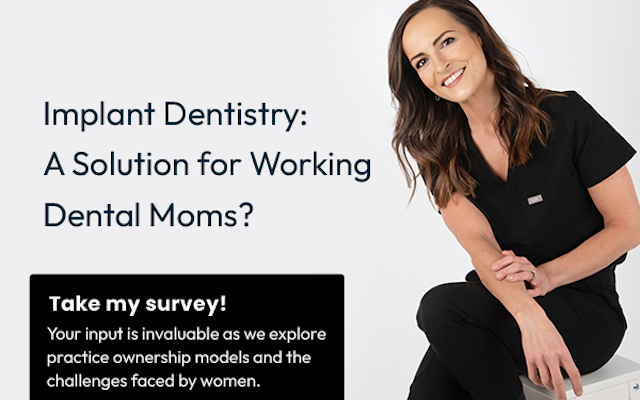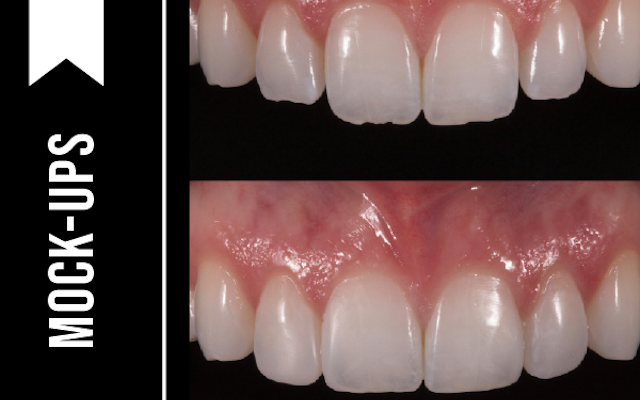A smile is beautiful when it is seen in the context of expression within an individual’s face. As dentists, we often focus on the tooth-by-tooth detail, but sometimes, it pays to take a step back and consider the entire expression.
I would like to refer you to an excellent article in the Journal of Cosmetic Dentistry by Drs. Michel Rogé and François-Marie Fisselier1. Referencing the art world, the authors discuss perceptual forces, which explains how we perceive relative harmony and balance of all the aspects that make up a smile.
By definition, harmony denotes a state of balance among forces influencing and even opposing one another. When describing the harmony of a smile, we are describing visual shapes that exert forces on their neighboring shapes.
Follow Guidelines, Not Rules
The textbook definition of the perfect smile is built from very subjective data. Many times, the studies ask laypeople to rate the attractiveness of a smile based on images of the teeth without the context of the face. When the studies are repeated using videos of expressions rather than stills of teeth, the results are different. Therefore, we should consider all the “rules” of smile design as guidelines, or benchmarks to fall back on when we are analyzing and problem-solving. We must not hold them as rigid criteria.
Instinctively, if we consider a smile in the context of the face and personality, we know if there is harmony or something causing visual tension. The difficult part can be putting the exact problem into words.
What to look for:
Parallelism. When the long axis of the front teeth are all parallel, we are close to uniformity which is boring and unnatural.
Attraction. When the long axes are angled toward the midline, we have a sense of attraction. In smile design, we ideally like the long axis of the central incisors to be vertical and parallel, with the laterals and canines angled toward the midline. Now we understand why this looks pleasing; it is the sense of attraction.
Repulsion. Conversely, when the long axis of objects is angled away from the midline, we get a sense of repulsion. So, if we have some teeth in a smile that are angled away from the midline, it is visually displeasing.
In the following diagrams, rectangles represent the upper six anterior teeth:
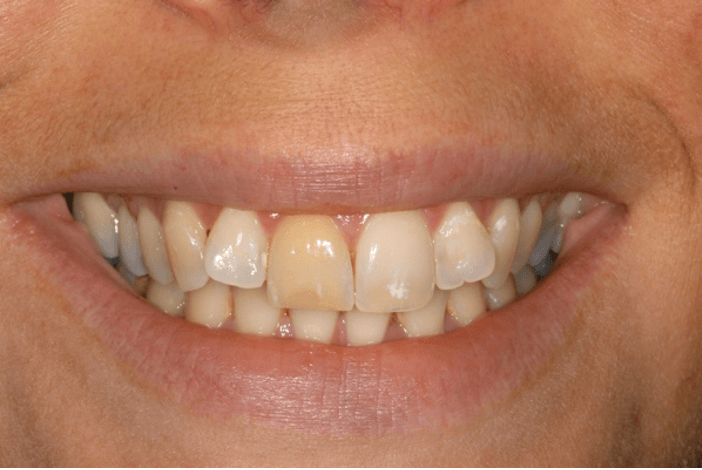
For example, in this case the centrals are parallel with color differences and the laterals are distally inclined. This causes visual tension in the smile composition:
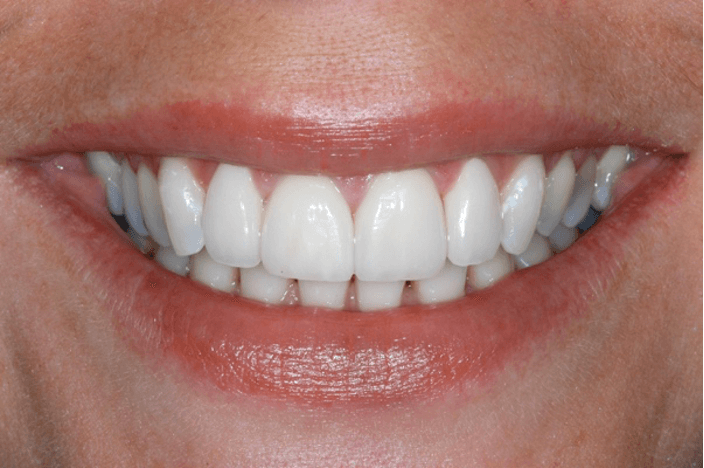
While the argument could be made that the buccal corridors are also slightly narrow, some whitening and porcelain across the four anterior teeth provide a more balanced smile:
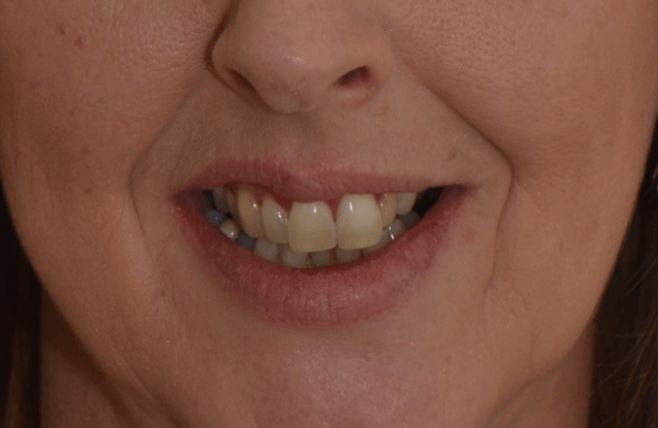
Facial Flow
When these artistic principles are applied to the smile in the context of the face, there is another published paper that can help us understand how facial asymmetry can work with us or against us.
The authors discovered that few faces have an exact midline2. Many have a curve, meaning the glabella, nose and chin point are not in a vertical line but can be a convex or a concave curve. They found that if a deviation from the ideal (like a midline position, for example) was toward the inside of the curve, then visual balance occurred. However, if the asymmetry was on the outside of the curve, it added to visual perception of disharmony. The authors named this concept facial flow.
For instance, the following case had a significant midline shift that would have taken complex orthodontics to fix. The patient also had asymmetries of the lip. Using the facial flow concept, it was noted that the midline shift was in harmony with the facial flow.
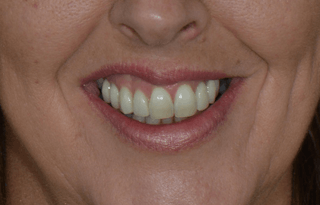
After a digital smile design test drive, the resulting treatment plan involved no treatment for the central incisors. Instead, it called for simply widening the smile of the upper lateral incisor to the upper second premolars.
Final Thought
While tooth-by-tooth details are important, the overall smile is best evaluated in a wider context.
_______________________________________________________________________________
References
1. Rogé, M., F.M. Fisselier (Winter 2017). "A New, More Personal Vision of Esthetics." Journal of Cosmetic Dentistry 32(4): 88-105.
2. Silva, B. P., E. Mahn, K. Stanley and C. Coachman (2019). "The facial flow concept: An organic orofacial analysis-the vertical component." J Prosthet Dent 121(2): 189-194.
"Smile Analysis" by Dr. Elaine Halley
Help your patients to smile with confidence. This non-formulaic focus on Smile Design offers a “how-to” approach to patient communication surrounding the art of smile analysis, the treatment planning process, and case presentation. Read it again and again as you master each step of smile creation at your own pace.
Honed over 30 years in her award-winning dental practice, Dr. Halley brings you her system for Smile Analysis, complemented by an array of case studies that allow you to test your skills before trying them in the clinic. This tried and tested method will transition your dental practice from a single-tooth method toward full-mouth care. Packed with “how-to” checklists, red flags, and decision points, this book will guide you through a step-by-step process, including how to incorporate technology, in the most understandable guide to better smiles available today.
 By:
By: 





